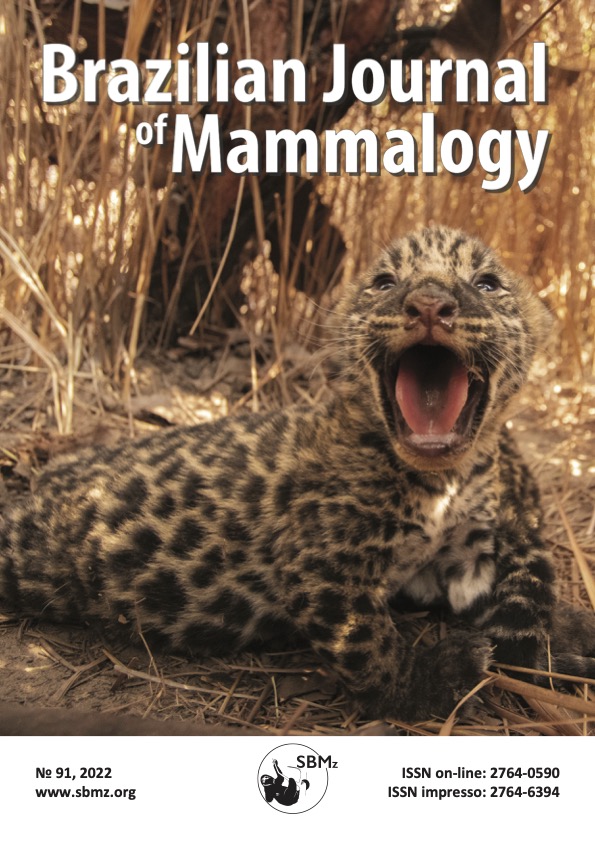Relationship between post cranial geometric morphometrics and phylogeny of echimyid rodents (Rodentia: Histricognathi: Echimyidae)
DOI:
https://doi.org/10.32673/bjm.vi91.85Abstract
Rodents constitute the richest order of mammal species. In South America, among the caviomorph rodents, the Echimyidae family has a confusing taxonomic history and, despite several revisions, there are still gaps in systematic studies for this family, which is comprised of the spiny rats, the hutias and the coypu. This family stands out for having a high number of species (ca. 100 spp.), wide variation in body mass and, also, a great diversity of locomotor habits, which include arboreal, scansorial, semi-aquatic, semifossorial and terrestrial. Thus, the skeletal function of echimyid rodents, together with their phylogenetic organization, provide a promising study model of particular interest for understanding how allometric, ecological and phylogenetic factors affect the evolution of the postcranial skeleton. Thus, the main objective of this thesis was to analyze the influence of these three factors on the difference in shape and size in postcranial morphology in a phylogenetic context, enabling the understanding of evolution and divergence in morphological and ecological characteristics. To carry out these analyses, we photographed 194 scapulae and 189 humeri from 38 species of 15 echimyid genera (ca. 37% and 54%, respectively, of the total number of echimyids). Subsequently, to solve this problem, we used geometric morphometry, a low-cost and accurate tool for identifying subtle morphological differences by digitizing 31 two-dimensional (2D) anatomical landmarks for the scapula (14 landmarks and 17 semilandmarks) while for the humerus, 23 landmarks (19 landmarks and 4 semilandmarks) were used. From the coordinates of these points, it was possible to eliminate the effect of species size, allowing us to test the differences in shape between phylogenetic groups and locomotor habits. Morphological variation of the scapula and humerus showed a low correlation with body mass and size, evidencing a small or negligible allometric effect. The results also showed a significant, but low, phylogenetic signal for both structures. The morphological variation of the scapula was extensively structured by the phylogeny of the echimyids and could become a relevant taxonomic and phylogenetic marker in future studies. On the other hand, the morphological variation of the humerus was structured by locomotor habits, making it useful for areas of study such as paleontology that seek to reconstruct locomotor habits from an ecomorphological perspective. Thus, these results suggest that postcranial structures such as the scapula and humerus were shaped by evolutionary constraints and adaptations and because they are involved with locomotion, these structures are well suited for ecomorphological studies as they are an essential part of ecomorphological and phylogenetic diversification. Although there are several works with the scapula and humerus of caviomorphs using morphological and morphofunctional approaches, this is the first morphometric study to address a wide diversity of echimyid genera using the scapula and humerus. This work provides insight into the function and evolution of the echimyid skeletal system, further suggesting that forelimb diversity is an essential part of the ecomorphological and phylogenetic diversification of this rodent family.
References
Resumo. Tese de Doutorado em Biodiversidade e Saúde
Downloads
Published
How to Cite
Issue
Section
License
Copyright (c) 2023 Brazilian Journal of Mammalogy

This work is licensed under a Creative Commons Attribution 4.0 International License.


